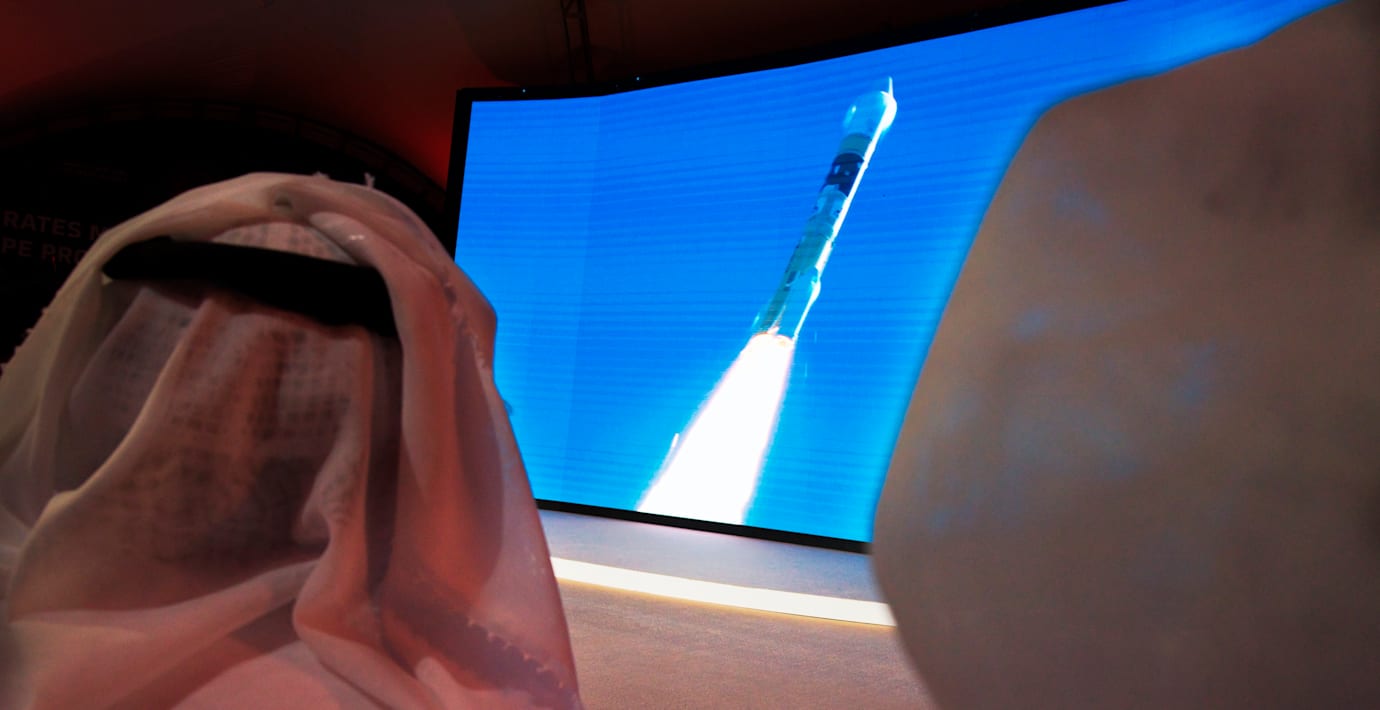
Första rymdsonden från Arabvärlden har lyft
Förenade arabemiratens rymdsond al-Amal, ”Hopp” på svenska, lyfte strax före midnatt svensk tid från rymdcentret Tanegashima i södra Japan, rapporterar flera nyhetsbyråer.
Rymdsonden är Arabvärldens första någonsin och är på väg mot Mars. Från februari nästa år ska den cirkulera runt planeten för att bland annat studera hur dess atmosfär fungerar.
Sonden är en del av Förenade arabemiratens rymdstrategi, som bland annat innebär att det inom 100 år ska finnas en färdigbyggd stad på Mars, skriver TT.
bakgrund
Mars
Wikipedia (en)
Mars is the fourth planet from the Sun and the second-smallest planet in the Solar System, being only larger than Mercury. In English, Mars carries the name of the Roman god of war and is often referred to as the "Red Planet". The latter refers to the effect of the iron oxide prevalent on Mars' surface, which gives it a reddish appearance distinctive among the astronomical bodies visible to the naked eye. Mars is a terrestrial planet with a thin atmosphere, with surface features reminiscent of the impact craters of the Moon and the valleys, deserts and polar ice caps of Earth.
The days and seasons are comparable to those of Earth, because the rotational period as well as the tilt of the rotational axis relative to the ecliptic plane are similar. Mars is the site of Olympus Mons, the largest volcano and highest known mountain on any planet in the Solar System and of Valles Marineris, one of the largest canyons in the Solar System. The smooth Borealis basin in the northern hemisphere covers 40% of the planet and may be a giant impact feature. Mars has two moons, Phobos and Deimos, which are small and irregularly shaped. These may be captured asteroids, similar to 5261 Eureka, a Mars trojan.Mars has been explored by unmanned spacecraft. Mariner 4, launched by NASA on November 28, 1964, was the first spacecraft to visit Mars, making its closest approach to the planet on July 15, 1965. Mariner 4 detected the weak Martian radiation belt, measured at about 0.1% that of Earth and captured the first images of another planet from deep space. On July 20, 1976, Viking 1 performed the first successful landing on the Martian surface. The Soviet Mars 3 spacecraft achieved a soft landing in December 1971 but contact was lost with its lander seconds after touchdown. On July 4, 1997, the Mars Pathfinder spacecraft landed on Mars and on July 5 released its rover, Sojourner, the first robotic rover to operate on Mars. Pathfinder was followed by the Mars Exploration Rovers, Spirit and Opportunity, which landed on Mars in January 2004 and operated until March 22, 2010 and June 10, 2018, respectively. The Mars Express orbiter, the first European Space Agency spacecraft to visit Mars, arrived in orbit on December 25, 2003. On September 24, 2014, the Indian Space Research Organization became the fourth space agency to visit Mars, when its maiden interplanetary mission, the Mars Orbiter Mission spacecraft, arrived in orbit.There are investigations assessing the past habitability of Mars, as well as the possibility of extant life. Astrobiology missions are planned, including the Perseverance and Rosalind Franklin rovers. Liquid water cannot exist on the surface of Mars due to low atmospheric pressure, which is less than 1% of the atmospheric pressure on Earth, except at the lowest elevations for short periods. The two polar ice caps appear to be made largely of water. The volume of water ice in the south polar ice cap, if melted, would be sufficient to cover the planetary surface to a depth of 11 meters (36 ft). In November 2016, NASA reported finding a large amount of underground ice in the Utopia Planitia region. The volume of water detected has been estimated to be equivalent to the volume of water in Lake Superior.Mars can easily be seen from Earth with the naked eye, as can its reddish coloring. Its apparent magnitude reaches −2.94, which is surpassed only by Venus, the Moon and the Sun. Optical ground-based telescopes are typically limited to resolving features about 300 kilometers (190 mi) across when Earth and Mars are closest because of Earth's atmosphere.
Omni är politiskt obundna och oberoende. Vi strävar efter att ge fler perspektiv på nyheterna. Har du frågor eller synpunkter kring vår rapportering? Kontakta redaktionen